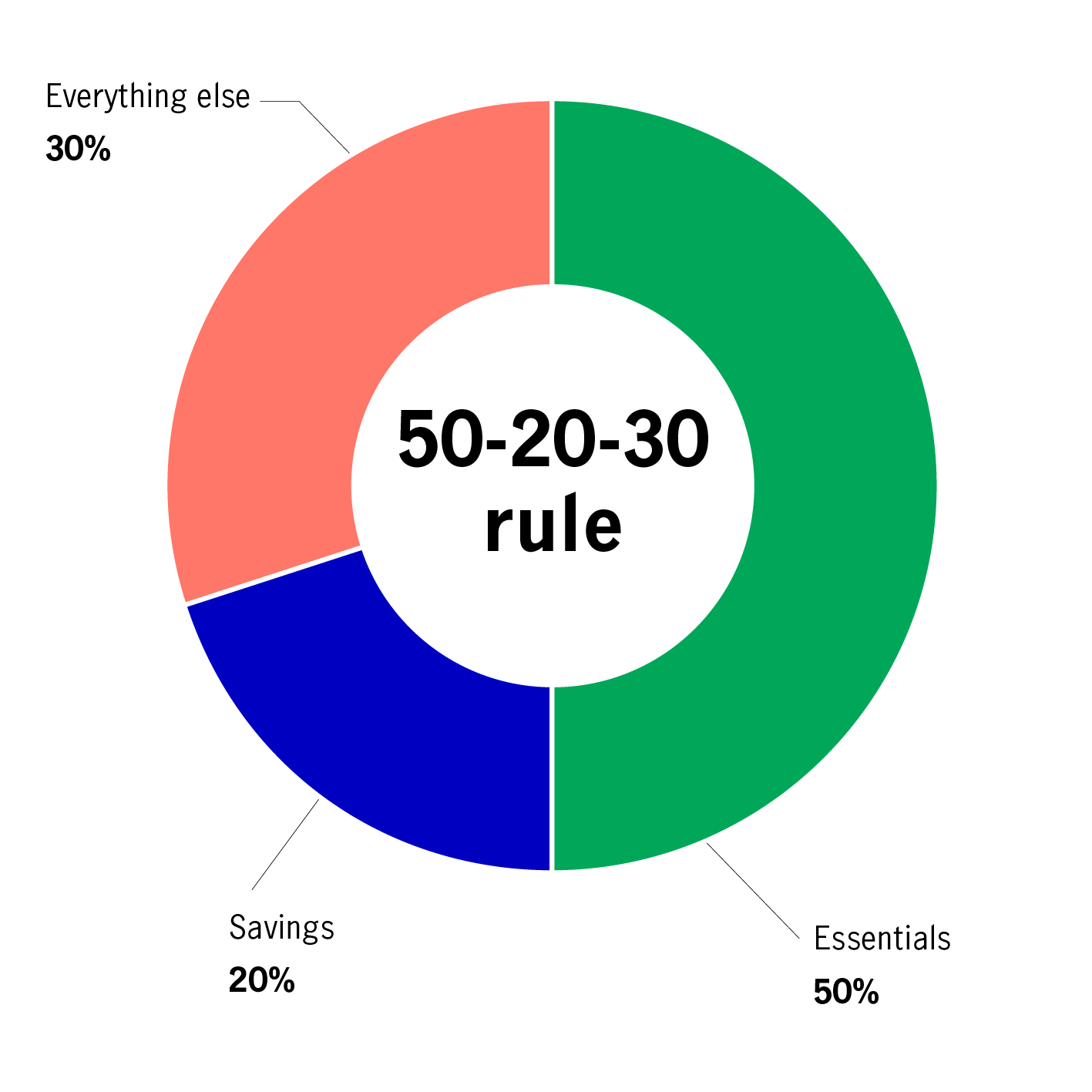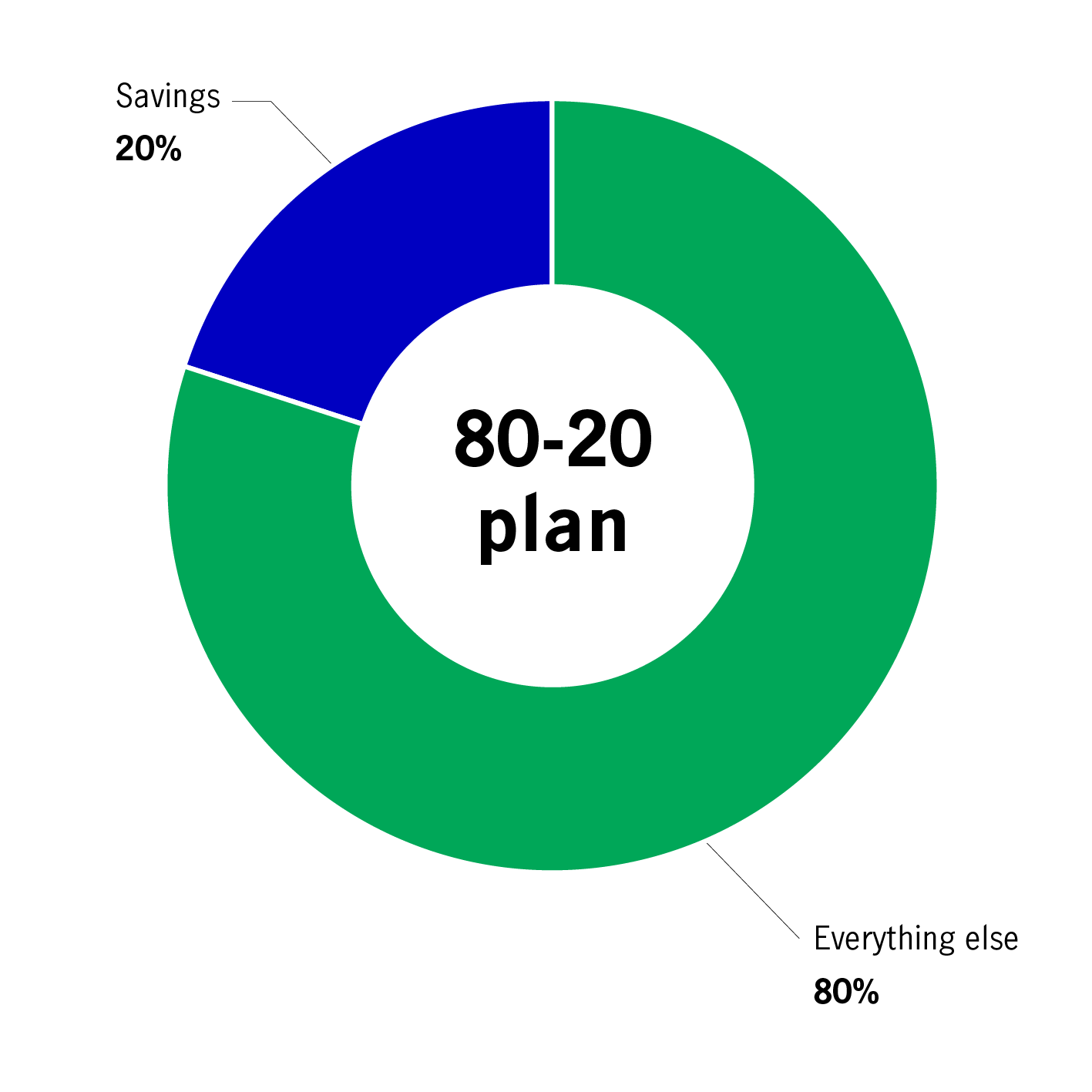When it comes to managing household finances, budgeting makes sense. However, it’s sometimes hard to accurately estimate what your outgoings will be each month. Unexpected bills and one-off costs can disrupt the best-laid plans! While there is no perfect way to ensure you live within your means, we have some suggestions that might help.
First of all, there’s the 50-20-30 rule. A wealth-management technique that divides your monthly income into three categories:
50% for essentials: rent and other housing costs, such as groceries, electricity or transport
20% for savings: savings accounts, retirement contributions, loans, or credit card payments
30% for everything else: non-essential expenses, such as clothing, eating out, monthly streaming subscriptions, or gym memberships
While you might not have a problem remembering the numbers 50-20-30, the rule itself isn’t always easy to live by. When it comes to expenses, one size doesn’t fit all and lifestyles will vary depending on, for example, where you live. City living can be more expensive and people may spend a large part of their income on rent, which can cause problems if your income is irregular. Housing costs can also be particularly tough for those in low-paid jobs.

Even simpler than the 50-20-30 rule is the 80-20 plan. Instead of separating every expense into what’s essential and what’s not, you take 20% of your monthly income and deposit it directly into a savings account. What’s left over is available to spend however you want.
A good tip here: create an automatic transfer that sets aside 20% as soon your monthly salary is paid. By immediately placing the cash in a separate savings account, it’s like you never had it in the first place!

Everyone’s budgeting needs are different. That’s why it’s sometimes better to create your own method. Start by calculating all your monthly expenses. Check your bank statements to make sure you’re noting everything down. Mortgage or rent costs are easy to remember, but subscriptions, such as streaming services or phone contracts, may slip through unnoticed. And remember to account for payments that come off less regularly, such as annual fees.
Once you know how much you spend, a quick calculation will tell you what’s left each month. This is easy when you have a regular salary but could be a little harder to determine if you have a freelance job or get extra funds from other work, rental income, or interest payments.
Quick Budgeting Checklist:
Once you’ve counted up all these numbers, you can decide where your money will go each month and how much disposable cash remains.
Remember, it’s important to monitor your expenses on an ongoing basis. Save all your receipts and cross check them against your card statements at the end of the month. See if you’re overspending in certain areas or if you can save a little more.
Keeping an eye on income and spending is not easy. However, working to a budget can simplify matters. Once you have established a reliable system that tracks your money, the process becomes less tricky, and you’ll find it easier to take control of your finances.
Source: John Hancock
How much do I need to save?
Find out more by using our target savings calculator!
Quick comments on Moody's cut US credit rating
On May 16, credit rating agency Moody's Ratings downgraded the United States' credit rating from Aaa to Aa1. Alex Grassino, Global Chief Economist, together with the Multi-Asset Solutions Team (MAST), Macroeconomic Strategy Team, share their latest views.
Riding the wave: building resilience amid volatility
On the back of escalating tariffs between the United States and other parts of the world, markets have dropped significantly as economic growth concerns have risen and investor sentiment and consumer confidence have destabilized, with some markets tiptoeing precariously on the precipice of bear market territory as of this writing.
Macro meets markets: 5 investable themes to watch
The intersection between the macro backdrop and the market setting investors must navigate has perhaps never been more apparent than it is today. The five themes discussed below highlight this critical intersection.
How much do you know about rates?
Recognise the different terms related to interest rates and understand how much yield global government bonds can offer.
Four essential keywords related to interest rates
Central banks in some emerging and Asian markets have started to hike rates, but deposit rates may not necessarily move in tandem. This would gradually erode depositors’ purchasing power in an inflationary environment. To achieve potential returns that beat inflation, deposit-focused investors should base any investment decisions on their risk tolerance levels and wealth management objectives.
Why demographic change requires a new set of cards
Many Asian governments are considering incentives to encourage larger families. These evolving policies will be vitally important, as the region looks to sustain a fast-greying population.